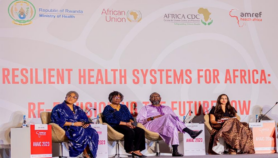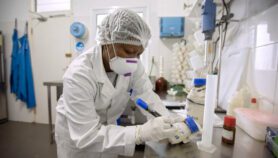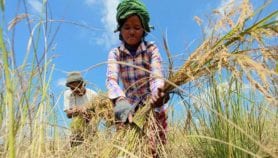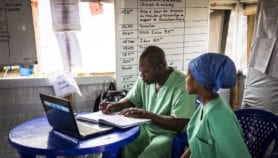By: Thomas G. Egwang
Send to a friend
The details you provide on this page will not be used to send unsolicited email, and will not be sold to a 3rd party. See privacy policy.
African malaria research networks have helped scientists combat the disease, but they need more stable support and longer-term funding, says Thomas Egwang.
Successful South–South collaborations need long-term, substantial funding. If this is available, both strong and weak institutions can benefit: the weak from infrastructure development and human capacity building, and both weak and strong from the innovative ideas that drive the collaboration.
Both institutions can use their results to leverage more funding, thereby increasing the likelihood of sustainability.
Despite criticisms, African networks have had a positive effect on malaria research across the continent. Other areas in which South–South collaboration could make a real regional impact include climate change, early warning systems for famine and disease epidemics, and renewable energy.
Africa’s malaria networks
A plethora of African networks and collaborations has emerged to investigate malaria. Many provide opportunities for multi-country teams with complementary strengths and experiences to collaborate on malaria control, an issue of common interest in the region.
South–South collaboration helps standardise research procedures and makes research findings more comparable across Africa’s varied malaria landscape. Malaria endemicity, clinical presentations, and human and malaria parasite populations differ genetically in different endemic regions. So there is a critical need to validate interventions developed in one country in other regions.
The forerunner of these collaborations, the Multilateral Initiative on Malaria (MIM), was established in 1997. It aimed to galvanise action in Africa against malaria by strengthening research capacity, increasing international cooperation and communication, and by using research findings to inform malaria prevention, treatment and control. It used grant-supported networks to foster North–South and South–South collaboration between African malaria investigators.
The investigators and their institutions benefited greatly. The research institutions got upgraded infrastructure. Individual investigators tapped into the creativity and innovation sparked by MIM networking, and young scientists and clinicians were mentored. Another benefit was closer collaboration between control programmes and researchers in individual countries.
The MIM Antimalarial Drug Resistance Network (ADRN) linked investigators from Ghana, Mali, Nigeria, Uganda and Tanzania. The network increased capacity, standardised protocols and shared reagents. It generated first-rate field and laboratory drug resistance data. These data helped establish the World Antimalarial Resistance Network (WARN) in 2007. WARN was possible because of the economies of scale achieved by ADRN’s networking and other South–South collaboration efforts fostered by MIM. More South–South networks on specific malaria issues have subsequently been formed.
Strengths and failures
South–South collaboration between African institutions allows successful role models from the stronger partner institutions mentor young investigators. Collaboration also works best when the institutions have different, and therefore complementary, strengths (perhaps in epidemiology, molecular biology, immunology or social sciences).
Malaria research strengths vary from country to country. Mali has emerged as a leader in research into mosquito vectors. Gambia, Ghana, Kenya, Mali, Mozambique and Tanzania have undertaken vaccine trials. Other African countries are building research capacity that is still needed. Partnering strong and weak institutions in research and capacity building and in clinical trials is probably the best model for African institutions and investigators.
Research findings from collaborations and networks have certainly informed malaria control policies and helped develop new interventions. Capacity has been built, and well-trained African investigators are poised to carry out cutting-edge basic and applied research in various African countries.
Nevertheless, South–South collaborations still attract criticism.
Despite support by MIM and other donors, the critical mass in individual countries often remains fragmented or too small to have a significant impact on malaria control. More investment and sustained effort on capacity building is urgently required. This will need well-funded South–South collaborations and other support mechanisms.
Funding generally has been short-term, lasting only three years, and the amounts pale in comparison with the capacity building and infrastructure still needed. In one network, there were concerns that some sites were unfairly over-funded compared with others.
I have been involved in two South–South collaborations and can state unequivocally that the linkages forged during short-term projects are flimsy and not durable. When the funding ends, the exchanges gradually fizzle out and the light of collaboration is extinguished.
Radical innovation and simple measures
Most South–South collaborations have targeted relatively high-tech research and applications, often focusing on incremental innovations to untested interventions. Yet in The End of Poverty, Jeffrey Sachs describes simple measures that do not need a lot of R&D and investment but save millions of lives — such as insecticide-impregnated bednets. This simple intervention has halved malaria-related infant deaths in Africa. South–South collaborations have neglected to identify and tackle the policy and socio-cultural barriers that still stop such life-saving measures from being rolled out to those who need them most.
South–South collaborations will stem the tide of malaria only when donors and national governments make a commitment for long-term (5–10 years) substantial funding. In order to slow the resurgence of malaria, collaborations must adopt radically innovative approaches that disrupt the current ineffective paradigms without neglecting well-tested solutions (such as bednets). These considerations are probably also valid for other infectious diseases, such as tuberculosis and HIV.
Thomas Egwang is chief executive officer of Uganda Media for Health and executive director of the African Academy of Sciences, Nairobi, Kenya. He is an active malaria researcher.
This article is part of a Spotlight on The promise of South–South cooperation.













